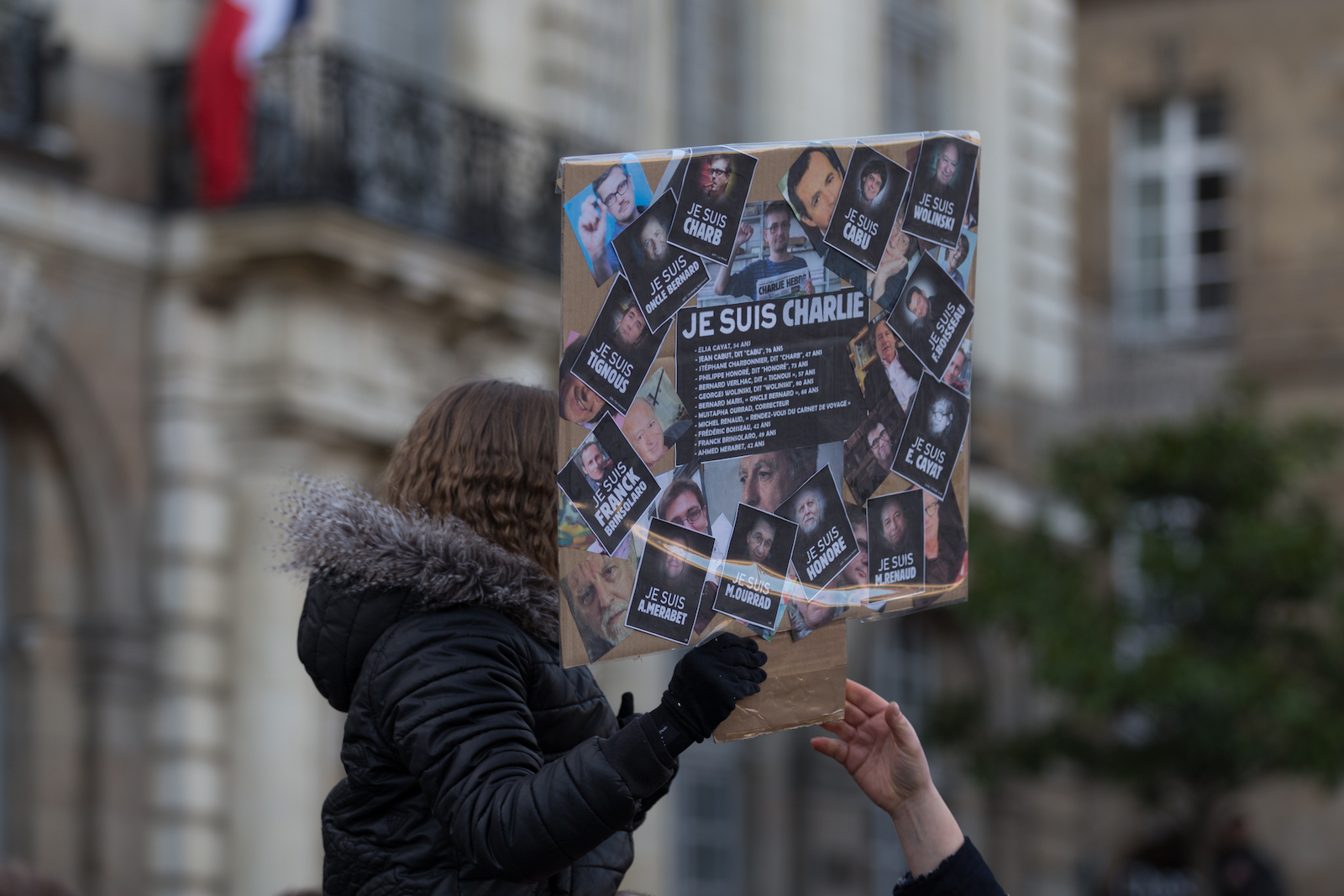
Business
Freedom to and Freedom From
The wave of mass casualty events across Europe and the U.S. raises serious questions about the cornerstones of liberal democracies, which are not only anchored in the concept of ‘freedom to,’ but in the concept of ‘freedom from.’ In this case, ‘freedom to’ congregate in public places, attend school, ride a train, enjoy a concert or travel in safety are all in the crosshairs of an increasingly violent world, where terrorism and other mass casualty events have honed in on so called soft targets. The solace and public solidarity following each one of these tragedies must soon give way to lasting solutions and political will for enhancing physical security and public safety. For these solutions to take hold, however, a series of political, societal and business tradeoffs must be made.
Freedom from mass violence
In the U.S. for example, where 301,797 lives were claimed by gun violence from 2005 to 2015, people cannot become inured to these events1. Becoming desensitized to mass violence, whatever the cause, stymies the very political will that is needed to drive change. While the frequency of U.S. mass casualty events is sure to make these tragedies feel ‘normal,’ they should be treated as aberrations in an orderly, peaceable society and something for which sacrifices must be made to bring these events to a halt. The right to bear arms can no longer trump the right to life and ‘freedom of’ movement.
At least two mass-casualty events in Europe, the axe attack on a passenger train in Germany and the more recent attack on a passenger train in Switzerland, while appalling in their violence, the comparative difficulty in obtaining firearms surely led to a lower overall casualty count. While the difficulty in obtaining firearms in Europe has triggered the use of alternative weapons of mass violence, such as the truck used in Nice during Bastille Day celebrations or other crude instruments, there is no question public safety is enhanced due to gun control measures. When active shooter events, which will be difficult but not impossible to contain, no longer trigger a gun buying spree, the U.S. will be on the right track.
Compared to the U.S., Europe has other challenges in terms of its physical security and public safety. Contrary to popular rhetoric, these challenges are largely home grown and not part of a concerted terror export strategy from ISIS or its sympathizers, reminding us that hateful ideologies are not subject to border controls. Rather, as evidenced by the fact that the vast number of perpetrators of Europe’s wave of terror, which began with the January 7, 2015 Charlie Hebdo attacks and have increased in audacity, frequency and geographic scope ever since, are in fact European nationals. Where U.S. public safety is largely a case of citizen against citizen combined with excessively easy access to assault weapons, Europe’s public safety challenges are largely driven by marginalized populations, porous borders and a general lack of coordination and decisiveness on collective security. For example, EU nationals who travel to join ISIS, should be on a one-way trip revoking their right of return and ‘freedom from’ military reprisal.
Arguably, Germany’s public safety challenges with migrants have as much to do with the fact that Germany has been overwhelmed with asylum seekers by remaining steadfast to its humanitarian commitments, while other EU countries erected barriers to entry heavily straining the 31 year old Schengen Agreement. Comparatively fewer migrants or refugees have arrived in Belgium and yet it has been the scene of some of the most appalling attacks in continental Europe, including the March 22, 2016 suicide bombings on the Brussels airport – carried out in a well-coordinated manner by a sleeper cell largely comprised of EU nationals. Many of these attacks may be inspired or directed by ISIS and its deft use of social media, aggrandizing barbaric acts, yet the public safety challenges in Europe remain largely a domestic affair. Greater coordination and a true pan-European approach must replace retrenchment and nationalistic sentiments, which are sweeping across the continent. If history is any guide, xenophobic political movements have posed greater threats to public safety than anything we are seeing today and we should not wager that their modern variants will be any less dangerous if they rise to power.
Virtual privacy and physical security
On both sides of the Atlantic, officials and the public are finding it harder than ever to find equilibrium between the right to privacy and security, which are increasingly at odds as more cases emerge challenging conventional wisdom. Here to we cannot blithely accept an incursion in either direction. Instead we need sensible anticipatory policies modernizing existing laws, many of which predate the digital age and ubiquitous smart devices registering every movement of both the innocent and criminal. Apple’s stance against the FBI over Syed Farook’s locked iPhone garnered more news coverage than the San Bernardino attack itself, which claimed 14 lives.
This case brought the dilemma of privacy versus security to new heights and demonstrated Apple’s stubborn adherence to its value system, even at the risk of eroding shareholder value. Yet it is hard to say whether the right process or outcomes prevailed in this case, as privacy and security are not tradeoffs, but rather locked in co-movement. If the location of a ticking dirty bomb were hidden in a locked iPhone it would surely garner a very different response and a greater sense of urgency from the public, Apple and the FBI. How to navigate the intersection of digital security and physical security remains largely unresolved and will require new and at times uncomfortable approaches to public-private collaboration.
Augmented reality, augmented risk
While comparatively trivial, the advent of Pokemon Go underscores the intersection of virtual security and physical security. Despite the fact that the Pokemon Go craze is a relatively new phenomenon, there are already a number of well-documented physical security risks and incursions. While most have remained reasonably controlled, augmented reality augurs a new frontier between privacy and security, where physical risks may very well flow from an otherwise innocuous game. One misplaced Pokemon, for example, and the somber grounds of the Holocaust Museum in Washington, D.C. were raided by Pokemon hunters triggering museum officials to implore them to search elsewhere. Already, lawsuits against Niantic, Inc. and Nintendo, Pokemon Go’s creators, are being drummed up claiming physical security risks and incursions on private property.
The nascent case log against augmented reality firms will push both the boundaries of vicarious liability and legal absurdity. It would not be surprising if one day Pikachoo, a star Pokemon, is a named defendant in a murder trial or terrorist conspiracy.
Physical security as competitive advantage
Soft targets exist in no small measure because other more desirable targets harden. While the concept is unpalatable, in our violent times where mass casualty events are a global phenomenon, investing in physical security is not only prudent, it is a source of competitive advantage for businesses and other organizations. The physical, emotional and economic toll from these events have bankrupted many an organization. Sandy Hook Elementary School reemerging from the ashes for example, took an unprecedented investment from all of the stakeholders in Newtown, Connecticut. The mass shooting on Virginia Tech’s campus, cost nearly $50 million, not to mention the incalculable emotional and physical toll levied on the victims and their loved ones. Even the threat of indirect events is exacting a heavy toll on cities, communities and businesses. The GDP at risk in Brussels following a citywide shutdown during the 10 day manhunt for the plotters of the Bataclan massacre in Paris, levied a heavy indirect economic toll on the city – the veritable capital of Europe – and its businesses. In December of 2015, Los Angeles cancelled classes for approximately 1 million students in an unprecedented shutdown of its school system following a bomb threat, which later turned out to be a hoax. The same threat was issued against New York Schools, where the comparatively hardened New York security officials called the bluff. The costs of direct and indirect events, when uninsured, are borne by businesses, public funds and ultimately tax payers.
Where policymakers have been slow to mount a meaningful response to eroding public safety and an increasingly complex physical security landscape, commercial solutions abound. From business continuity insurance, including the loss of revenue due to indirect events, including war and terrorism, offered by Lloyd’s, to insurance against active shooter events or cyber bullying, increasingly innovative financial protection is being offered by specialized firms. Leading risk advisors like Kroll help fill the decision making void by integrating a wide range of physical and cyber security solutions with expert advice, monitoring and other measures. Sadly, until there is broader political and public will to enhance safety and security through policy, private sector firms will continue playing a vital role. As always, the first line of defense in any public safety and physical security strategy are well advised, alert people who are willing to act in the event of a threat.

